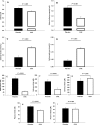Effects of Chlorhexidine mouthwash on the oral microbiome
- PMID: 32210245
- PMCID: PMC7093448
- DOI: 10.1038/s41598-020-61912-4
Effects of Chlorhexidine mouthwash on the oral microbiome
Abstract
Following a single blind, cross-over and non-randomized design we investigated the effect of 7-day use of chlorhexidine (CHX) mouthwash on the salivary microbiome as well as several saliva and plasma biomarkers in 36 healthy individuals. They rinsed their mouth (for 1 min) twice a day for seven days with a placebo mouthwash and then repeated this protocol with CHX mouthwash for a further seven days. Saliva and blood samples were taken at the end of each treatment to analyse the abundance and diversity of oral bacteria, and pH, lactate, glucose, nitrate and nitrite concentrations. CHX significantly increased the abundance of Firmicutes and Proteobacteria, and reduced the content of Bacteroidetes, TM7, SR1 and Fusobacteria. This shift was associated with a significant decrease in saliva pH and buffering capacity, accompanied by an increase in saliva lactate and glucose levels. Lower saliva and plasma nitrite concentrations were found after using CHX, followed by a trend of increased systolic blood pressure. Overall, this study demonstrates that mouthwash containing CHX is associated with a major shift in the salivary microbiome, leading to more acidic conditions and lower nitrite availability in healthy individuals.
Conflict of interest statement
The authors declare no competing interests.
Figures





References
-
- Afennich, F., Slot, D., Hossainian, N. & Van der Weijden, G. The effect of hexetidine mouthwash on the prevention of plaque and gingival inflammation: a systematic review. Int J Dent Hyg. 9 (2011). - PubMed
-
- Eick, S., Goltz, S., Nietzsche, S., Jentsch, H. & Pfister, W. Efficacy of chlorhexidine digluconate–containing formulations and other mouthrinses against periodontopathogenic microorganisms. Quintessence Int. 42 (2011). - PubMed
Publication types
MeSH terms
Substances
LinkOut - more resources
Full Text Sources
Medical

